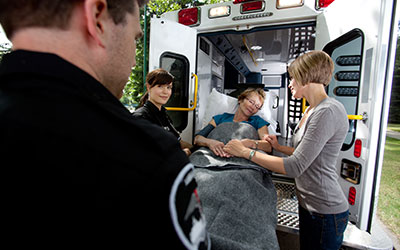Posted on Nov 20, 2017
Image Credit: © Dreamstime.com
Dealing with Medical Emergencies in the Dental Office
Main Content A+ A- A
A medical emergency is one event that dental practices should be prepared for, and the level of preparation determines whether the emergency is handled successfully or not. In this article, we will examine how to develop a plan for handling a medical emergency, and which medical emergencies are most commonly experienced in the dental office.
How Does It Start?
More often than not a medical emergency starts off like any other dental appointment. It doesn’t have to be a new patient either; it’s highly likely that an existing patient you have treated for many years may present a problem. The scenario could play out like this: you administer a dose of local anesthesia and leave the patient with your assistance. When you return he doesn’t experience any numbness so you administer another dose. The next thing you know, your patient is clutching at his chest before becoming unresponsive.
Believe it or not, this scenario has a very real chance of happening. In fact, medical emergencies are 5.8 times more likely to take place in a dental environment than a medical one.
What Are the Most Common Medical Emergencies You Can Expect?
While an emergency could arise from almost anything, statistically these are the emergencies most likely to occur:
- Adverse reactions to drugs
- Changed mental status
- Shortness of breath
- Chest pain
- Diabetes complications
- Seizures
- Cardiopulmonary arrest
Statistically, tooth extractions carry the highest element of risk, followed by pulpal extractions.
So How Do You Prepare Yourself?
The three cardinal rules involve having:
- The right tools
- Adequate training
- Enough practice
The American Dental Association stipulates that dentists and all practice staff members have the right training to deal with any emergencies that may arise in the dental chair and every dental practice should have a plan to deal with medical emergencies.
Step One: Assess
In a medical situation, your first step is to assess it. Is the patient breathing and does he or she have a pulse? Once you have determined an emergency is taking place, you need to call for medical transport and begin treating the patient with the appropriate tools.
Step Two: The Tools
Your emergency medical kit needs to be pre-assembled and kept in a place where everyone in the practice may access it quickly. The essential tools are:
- Positive pressure or supplemental oxygen
- Epinephrine to restore cardiac rhythm
- Nitroglycerin
- Glucose
- Benadryl or diphenhydramine
- Albuterol
- Aspirin
Optional extras for your medical emergency kit include:
- An automated external defibrillator
- Nitrous oxide
Medical Emergency Training Sessions
It is highly recommended that your entire team has BLS (Basic Life Support) and ACLS (Advanced Cardiac Life Support) training. A well-trained team has more confidence and skills available to handle any medical emergency.
Some pointers to enhance your medical training include:
- Hold training sessions in your practice.
- Practice your medical emergency response with your employees, using your own equipment.
In addition to practicing your responses every six months, you should have a written plan on hand to inform all staff members of standard operating procedures to follow during a medical emergency.

